The Temple of Literature in Hanoi is Vietnam’s first university. Today, it stands as a historical and cultural relic that attracts many students and scholars who come to seek luck in their studies and examinations. It is also a popular destination for tourists. If you have the opportunity to travel solo in Hanoi, take the time to visit this place as there are many interesting things to learn and discover. However, since it is a place of worship, there are strict regulations. You can refer to the following information before your visit.
Table of Contents
A few details about the Temple of Literature in Hanoi.
The Temple of Literature in Hanoi – a place name that is probably familiar to every Vietnamese person. This relic is the pride of the capital’s residents and a glorious testament to the educational endeavor of a bygone era.
Address of the Temple of Literature in Hanoi.
The Temple of Literature is located on Quoc Tu Giam Street, in the Dong Da District of Hanoi. In the past, it belonged to the Minh Giam village, part of the Huu Nghiem commune, Tho Xuong district. During the French colonial period, it was within the Thinh Hoa village area, Yen Ha, Hoang Long, Ha Dong. Its four sides are bordered by four main streets: to the south is Quoc Tu Giam Street (main gate), to the north is Nguyen Thai Hoc Street, to the east is Van Mieu Street, and to the west is Ton Duc Thang Street.
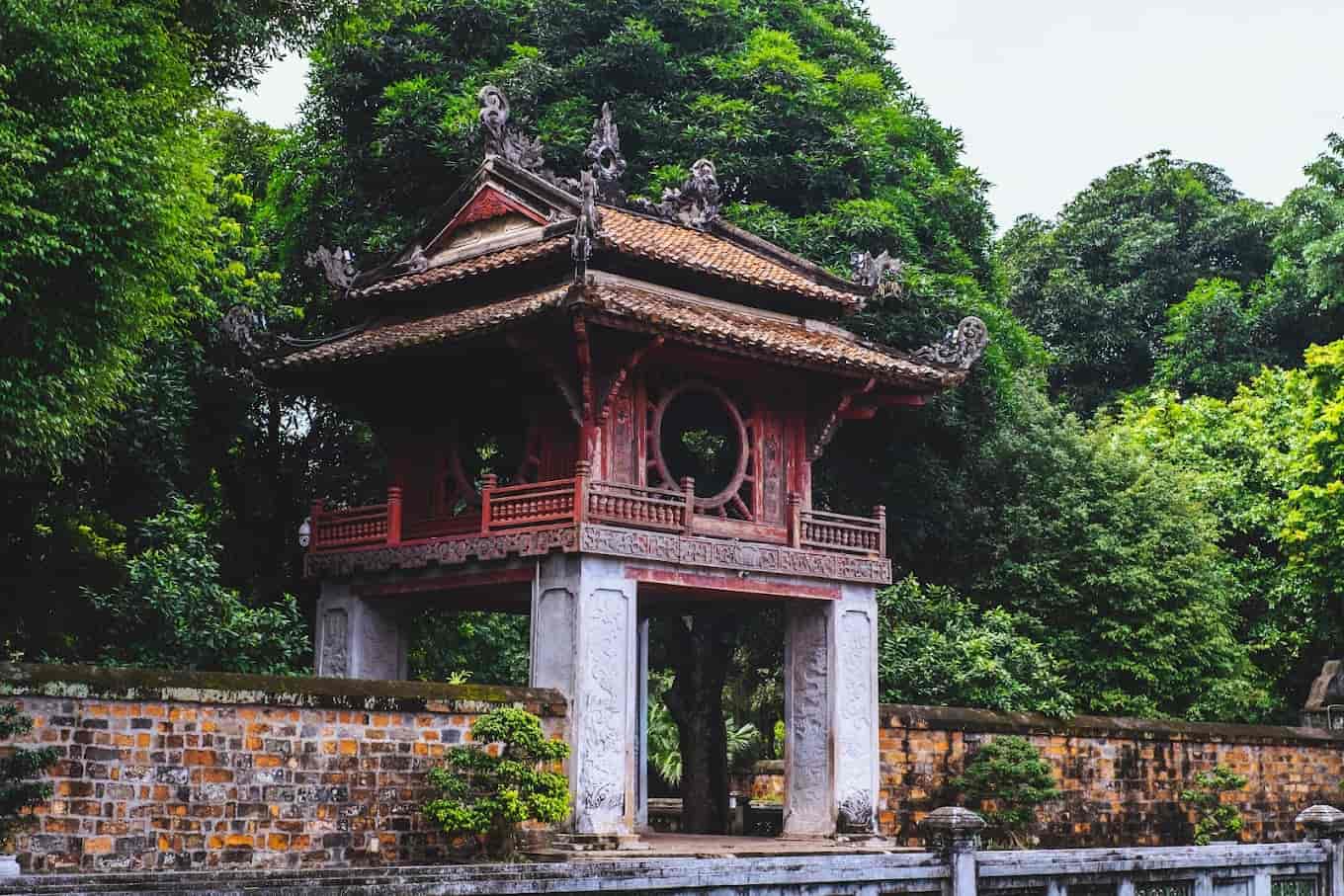
History of the Temple of Literature.
In the year 1070 (during the reign of King Le Thanh Tong), the Temple of Literature was built to worship Confucius, Chu Cong, and the Four Accomplished Ones. By 1076, King Le Thanh Tong expanded it to include Quoc Tu Giam, a school intended for the royal and noble families. In the era of King Tran Thai Tong, it was renamed as Quoc Hoc Vien (National School) in 1253, allowing even commoners’ children who excelled in their studies to attend. In the later Le dynasty, King Le Thanh Tong ordered the construction of stelae for those who passed the doctorate examination starting from the 1442 examination, and to this day, 82 stelae remain.
See More: Explore St. Joseph Cathedral – one of the 7 largest cathedrals in the capital city of Hanoi.
Opening hours of the Temple of Literature in Hanoi.
Currently, the Temple of Literature in Hanoi has become a well-known tourist spot, so it’s open every day of the week, including holidays and festivals, to serve the needs of domestic and international tourists. However, the opening hours are not fixed and may change according to the season.
- Opening hours by day: Monday to Friday: Open from 7:30 AM to 6:00 PM; Saturdays and Sundays open 30 minutes later (at 8:00 AM) and close 3 hours later (at 9:00 PM).
- Opening hours by season: During the summer season (from April 15 to October 15), the Temple of Literature welcomes visitors from 7:30 AM to 6:00 PM. In the colder season (from October 16 to April 14 of the following year), visitors can explore the Temple of Literature from 8:00 AM to 6:00 PM.
Does the Temple of Literature in Hanoi sell tickets for admission?
Many people wonder if the Temple of Literature in Hanoi sells tickets for admission. The answer is yes, and the price is listed as 30,000 VND per person, applicable to both foreign visitors and Vietnamese guests. For individuals with severe disabilities, the elderly, residents from mountainous and remote areas, those with contributions to the revolution, the Party, and students over 15 years old, a 50% discount on the ticket price will be provided. Children under 15 years old and individuals with severe disabilities are exempt from ticket fees.
Tips for exploring the Temple of Literature in Hanoi.
Guidance on getting to the Temple of Literature in Hanoi.
From the city center to the Temple of Literature, visitors can use public transportation such as buses, taxis, or personal vehicles like renting a motorbike in Hanoi for self-travel.
If using the bus, you can take one of the routes numbered 02, 23, 25, 38, 41, which pass by or stop near the Temple of Literature. If traveling by personal vehicle, starting from Hoan Kiem Lake, you can follow Ly Thai To Street, turn right onto Trang Thi Street, then proceed towards Cua Nam – Nguyen Khuyen Street, and then turn left onto Van Mieu Street. After a short distance, you’ll arrive at the destination, but please be aware of the one-way streets around this area!
Additionally, you can also rent a private car with a driver in Hanoi from #VnCarRentals.com. With a private car, besides visiting the Temple of Literature, you can explore many other places in Hanoi. The professional drivers with years of experience in international passenger transportation will ensure you have the safest and most comfortable journey.
Notes for visiting the Temple of Literature in Hanoi.
As I see it, visitors should pay attention to their attire, avoiding wearing revealing or inappropriate clothing. Hats should not be worn in the worship areas or exhibition houses.
Respect for the historical site is essential. Do not tamper with artifacts, disturb the interior landscapes, touch the tortoise heads, or engage in inappropriate behavior such as sitting, writing, or drawing on doctorate stelae. Additionally, avoid uncultured behavior, offensive language, actions that compromise security, especially during ceremonial activities.
Maintain cleanliness and environmental aesthetics. Do not climb walls, step on grass, pluck flowers, or break branches. Do not carry explosive materials that could pose a fire hazard within the heritage site. Moreover, the Temple of Literature strictly prohibits any exploitation of religious freedom to deceive, swindle, or misappropriate property.
What is there to explore at the Temple of Literature in Hanoi?
Understanding the Architecture of the Temple of Literature.
When visiting Hanoi, exploring the Temple of Literature requires delving into its architecture. Currently, this historical site covers an area of 54,331 square meters and includes various small architectural structures such as Lake of Literature, Van Mieu Gate, Dai Trung Mon, Thien Quang Well, Dai Thanh Mon, Khue Van Pavilion, Thai Hoc House, and the stelae of doctors.
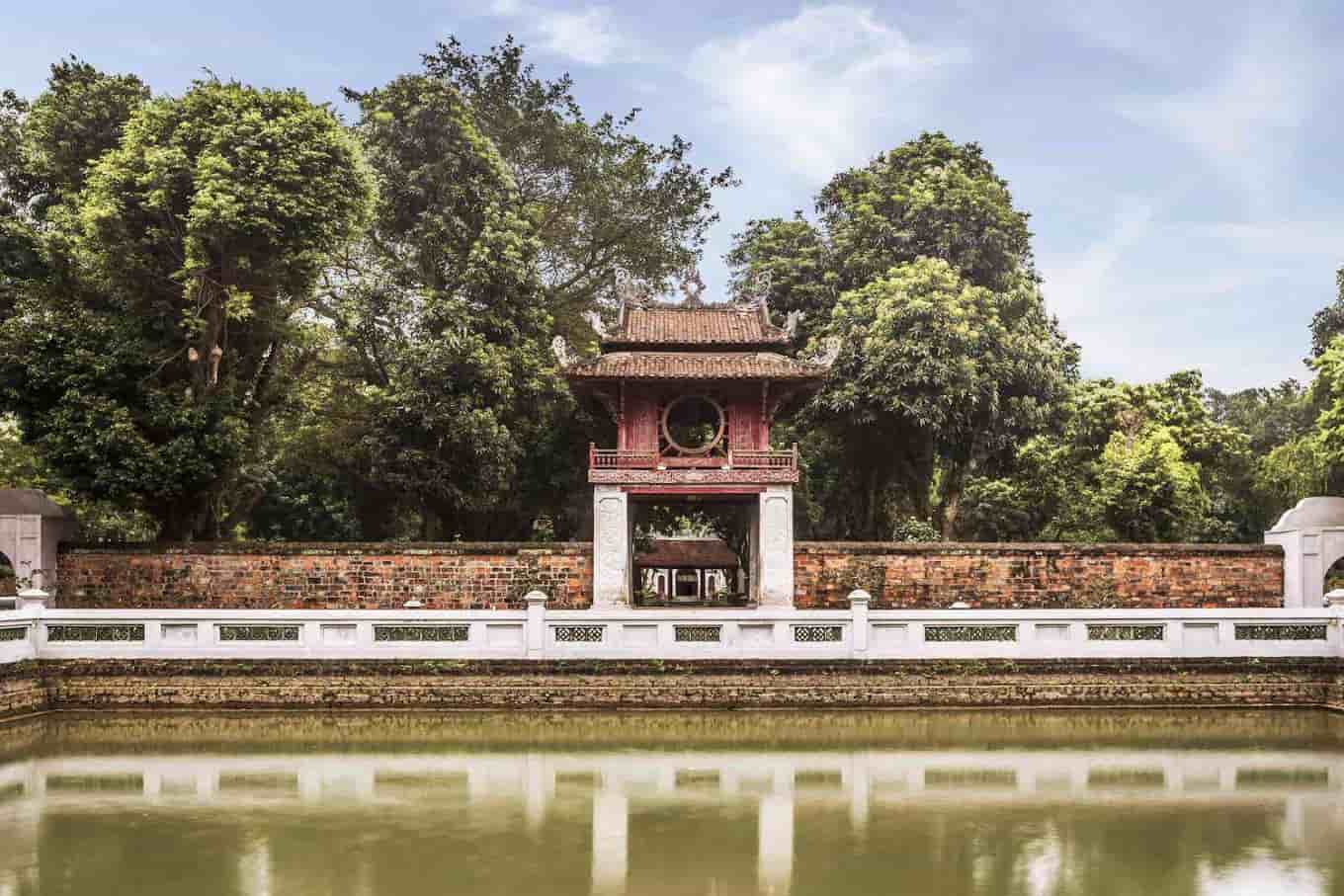
The teaching houses in the East and West consist of 14 rooms. The entire architecture here follows the early Nguyen dynasty style, arranged in a symmetrical layout with North-South axis orientation, mimicking the image of Confucius’ temple in China while preserving the traditional artistic style of the Vietnamese people.
In front of the Temple of Literature, there is a large lake called Van Chuong Lake. In the middle of the lake, there is Kim Chau Mound. Outside the main gate, there are four pillars, with the Hạ Mã stelae on the left side and surrounding the area with high walls.
Exploring the Different Areas at the Temple of Literature in Hanoi.
If you take a closer look, you’ll find that the Temple of Literature is divided into five distinct areas, each separated by walls and linked by gates, each serving different functions.
The first area – Dai Trung Mon.
From the main gate, entering the first area known as the “Entrance,” walking straight to the second gate, you’ll reach Dai Trung Mon, flanked by two small gates – Dat Tai on the right and Thanh Duc on the left.
The second area – Khue Van Pavilion.
Khue Van Pavilion is a unique architectural structure built in 1805, consisting of 8 roofs (4 upper and 4 lower). The lower level features 4 rows of bricks with ornate carvings, while the upper levels and all four sides are made of wood. In the past, this place was used to gather and evaluate the essays of successful candidates in the imperial exams. Today, it symbolizes Hanoi’s capital.
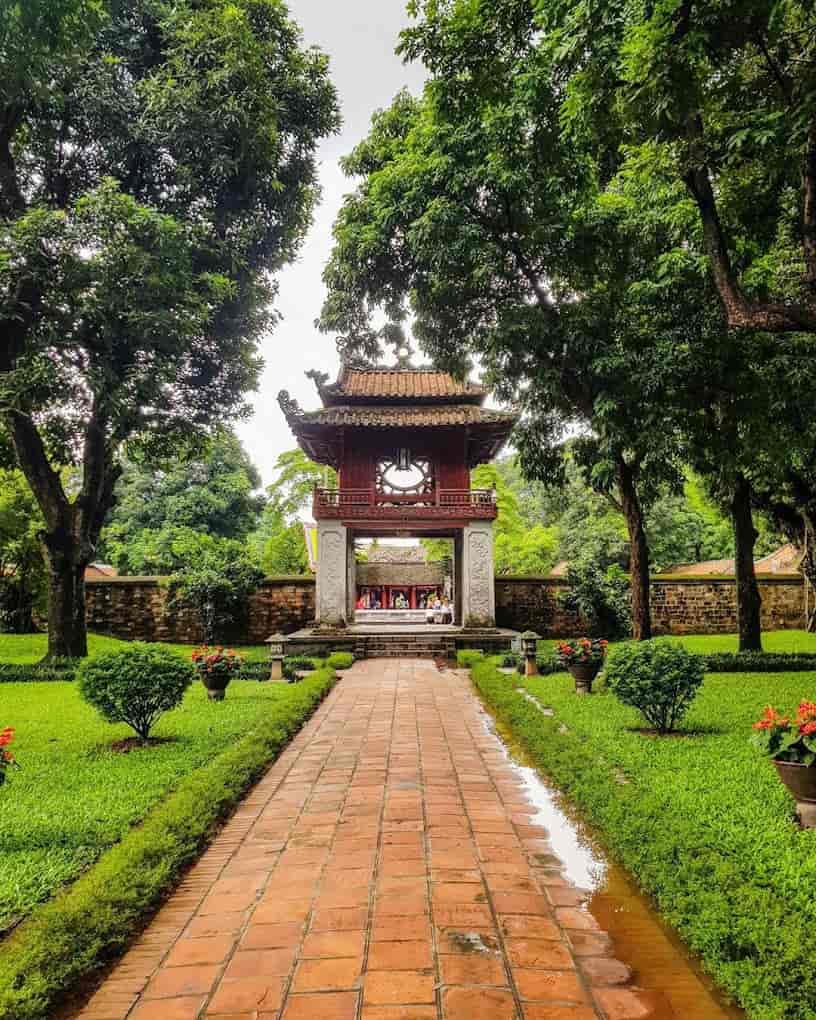
The third area – Doctorate Steles and Thien Quang Well.
Proceeding through the upper gates, visitors will reach this area. Unlike a circular shape, Thien Quang Well is square, and on both sides are the areas for doctorate stelae. Here, there are 82 stelae, arranged in two rows, each placed on the back of a stone tortoise, adorned with sun, grass, and flower patterns.
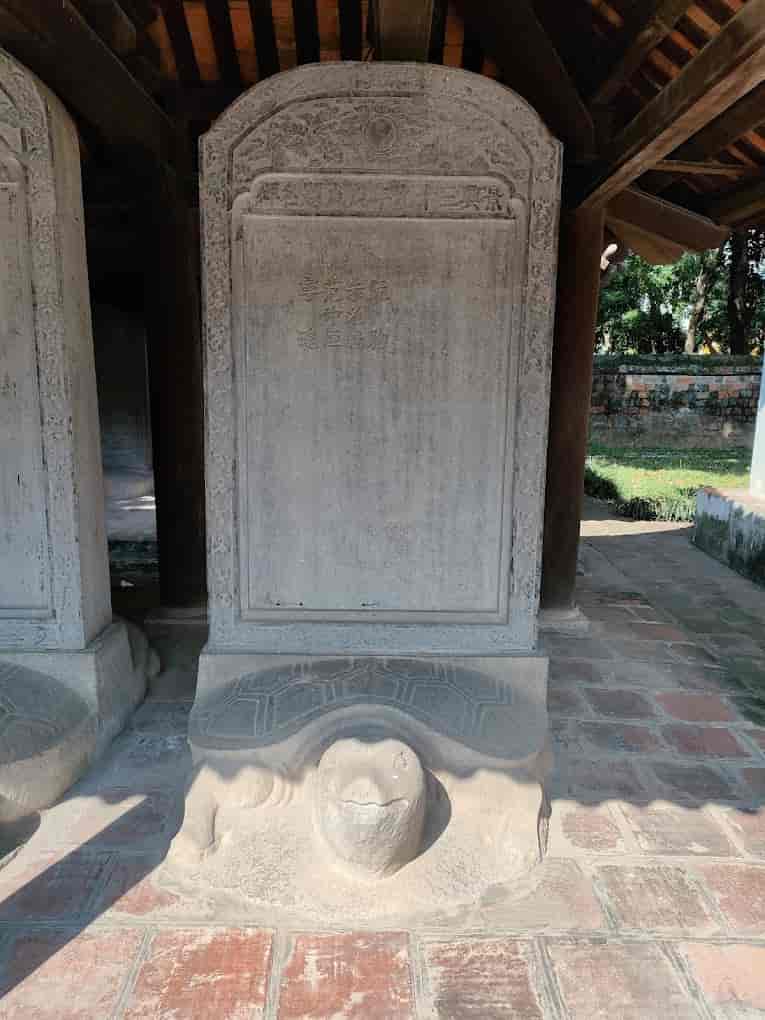
The fourth area – Dai Bai Hall.
After exploring the doctorate stelae area, you continue through Dai Thanh Gate to reach Dai Bai Hall – where Confucius, Chu Cong, Tu Phoi, and the 72 virtuous men are worshipped, as well as the teaching place of the ancient academy. On both sides, there are two small gates called Kim Thanh Mon and Ngoc Chan Mon. However, these gates are not open, and you must walk behind the Tả Vu and Hữu Vu rows to access the fifth area.
The fifth area – Khai Thanh Temple.
In reality, this area is the Thai Hoc House. During the Nguyen dynasty, the Hanoi National Academy was abolished, and the Thai Hoc House was transformed into Khai Thanh Temple, dedicated to Confucius’ parents. Additionally, there are Tien Duong and Hau Duong shrines dedicated to Chu Van An and several other kings.
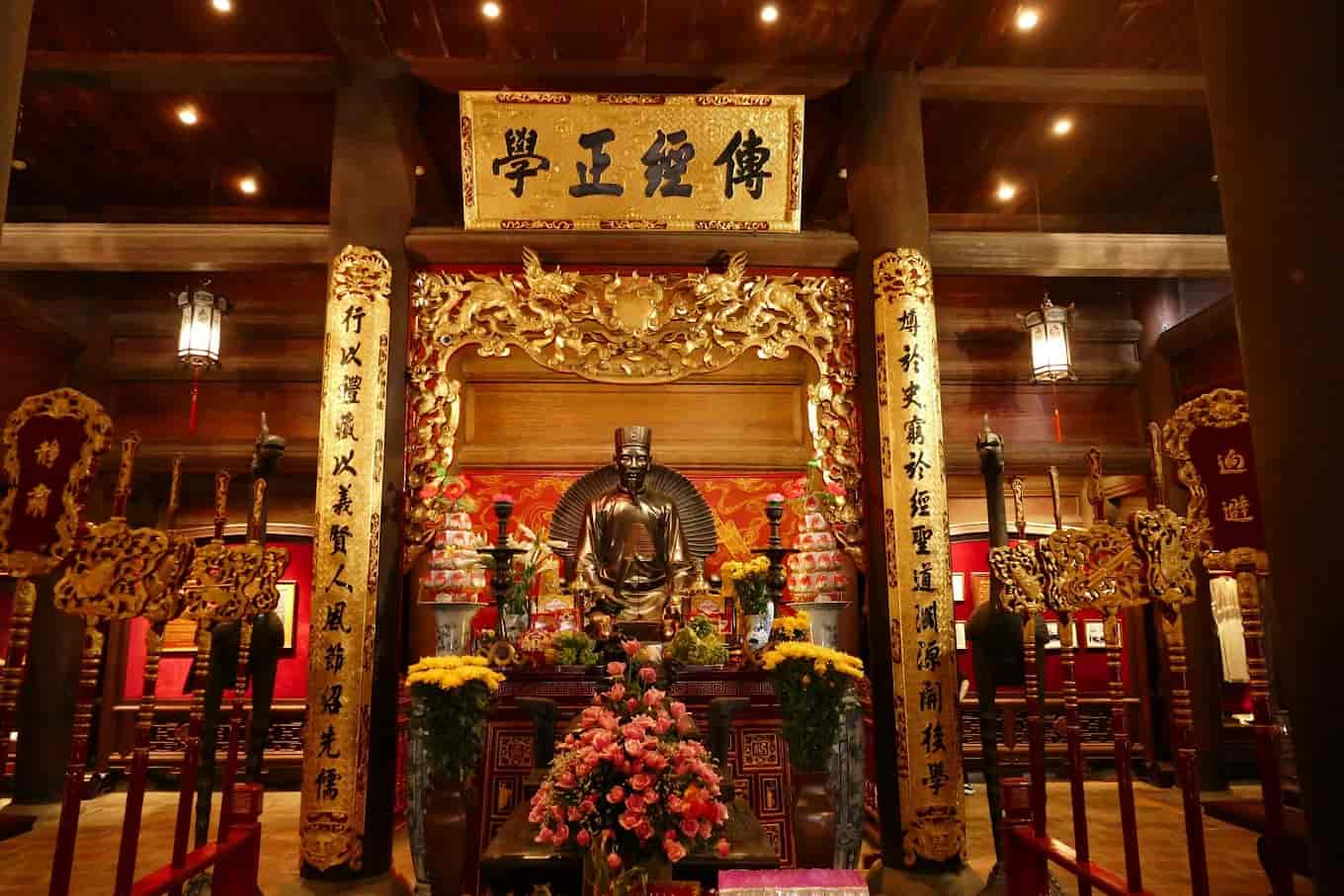
Despite numerous historical ups and downs, even though some architectural structures were destroyed, the Temple of Literature in Hanoi, with its significant historical meaning, remains a symbol of educational excellence well worth a visit.


